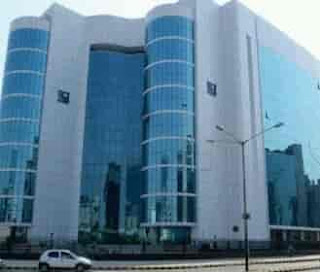UGC NET ,UPSC and other competition Exams National BANK OF INDIA (RBI) ,Cash Money concept MACRO ECONOMICS
UGC NET ,UPSC and other competition Exams National BANK OF INDIA (RBI) ,Cash Money concept MACRO ECONOMICS
Central Bank of India
National bank (RBI), Cental bank, or financial authority is an organization that deals with the cash, cash supply, and loan fees of a state or formal money related association, and administers their business banking framework. As opposed to a business bank, a national bank has a syndication on expanding the money related base in the state, and furthermore by and large controls the printing of the national currency,which fills in as the state's legitimate tender.A national bank additionally goes about as a moneylender after all other options have run out to the financial area during times of monetary emergency. Most national banks additionally have supervisory and administrative forces to guarantee the solidness of part organizations, to forestall bank runs, and to demoralize foolish or deceitful conduct by part banks.
National banks in most created countries are institutionally free from political impedance. In any case, restricted control by the official and administrative bodies exists.
Elements of a national bank may include:
1) Executing money related approaches.
2) Setting the official financing cost – used to oversee both swelling and the nation's conversion scale – and guaranteeing that this rate produces results through an assortment of approach components
3) Controlling the country's whole cash supply
4) Government's investor and the financiers' bank ( loan specialist after all other options have run out)
5) Dealing with the nation's outside trade and gold stores and the Administration bonds.
6) Controlling and regulating the financial business
7)The Cental Bank of India (RBI) is India's national bank, which controls the issue and supply of the Indian rupee. RBI is the controller of whole Banking in India. RBI has a significant impact in the Improvement Technique of the Administration of India.
7) RBI manages business banks and non-banking fund organizations working in India.
8) It fills in as the pioneer of the financial framework and the currency advertise.
9) It controls cash supply and credit in the nation.
10)The RBI does India's fiscal arrangement and activities supervision and authority over banks and non-banking money organizations in India.
RBI SET UP
RBI was set up in 1935 under the Save Bank of India Act,1934. unique offer capital was isolated into portions of 100 each completely paid . Following India's freedom on 15 August 1947, the RBI was nationalized on 1 January 1949.
Approved BOARD
The general superintendence and course of the RBI is endowed with the 21-part focal directorate: the senator; four delegate governors; two account service agents (normally the Monetary Issues Secretary and the Money related Administrations Secretary); ten government-named executives to speak to significant components of India's economy; and four chiefs to speak to neighborhood sheets headquartered at Mumbai, Kolkata, Chennai and the capital New Delhi. Every one of these nearby sheets comprises of five individuals who speak to local premiums, the premiums of co-employable and indigenous banks.
The national bank is a free summit fiscal position which directs banks and offers significant budgetary types of assistance like putting away of remote trade saves, control of swelling, money related approach report till August 2016. A national bank is known by various names in various nations. The elements of a national bank may shift from nation to nation and are self-sufficient or body and perform or through another organization indispensable money related capacities in the nation. A national bank is a crucial money related pinnacle foundation of an economy and the key objects of national banks may vary from nation to nation still they perform exercises and capacities with the objective of keeping up monetary solidness and development of an economy.
Stay Tuned and subscribe in for next arrangement of National Bank.





Comments
Post a Comment